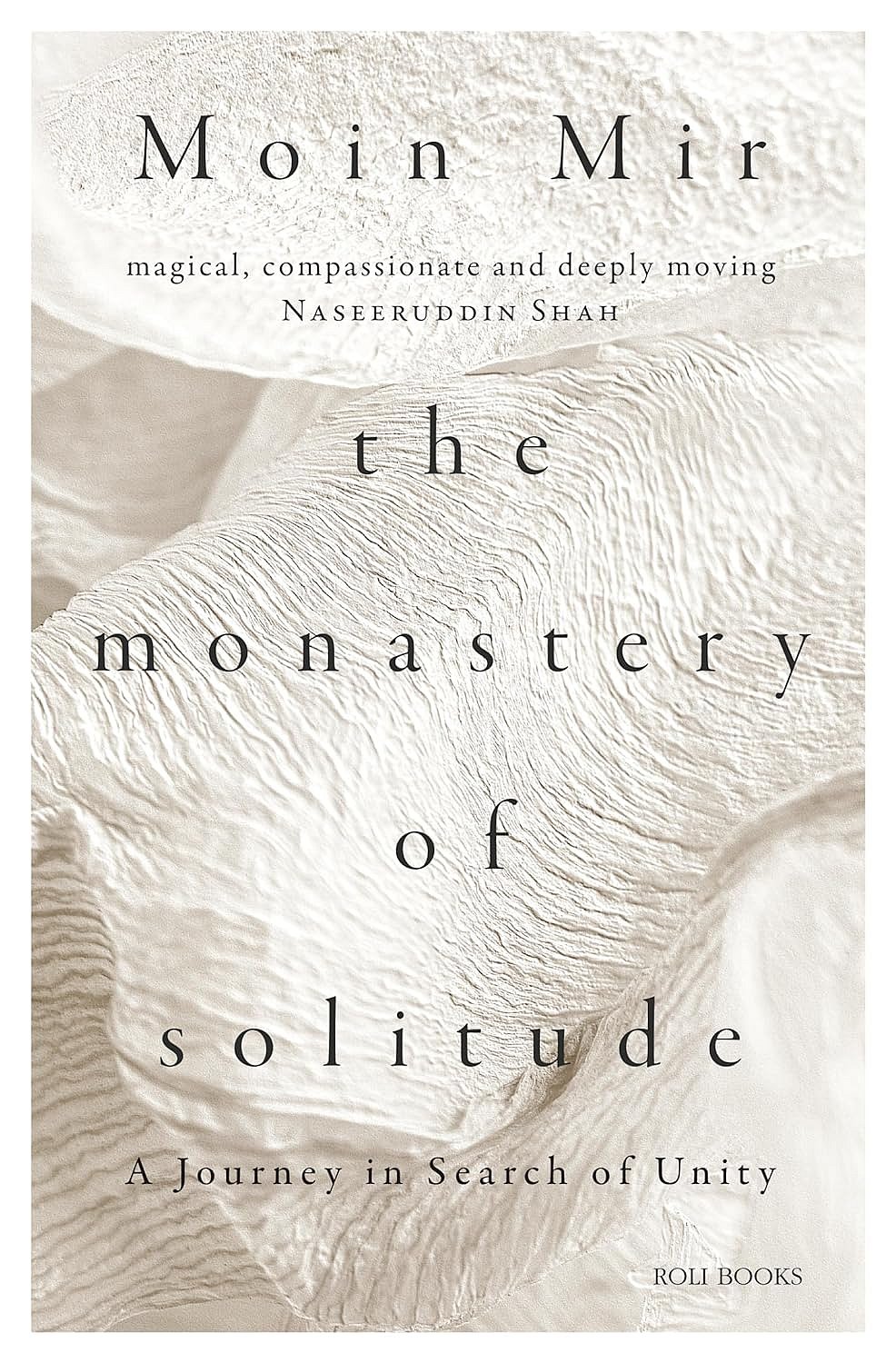The Path of Plotinus

At the age of 39, in the year 242 CE, the Egypt-born Roman philosopher Plotinus embedded himself into the Greek army under the reign of Emperor Gordian III, marching eastwards towards India, where he intended to leave the military and study the Upanishads. Gordian III was killed, and Plotinus turned back. Although he lived into his late sixties, he did not attempt the journey to India again.
In The Monastery of Solitude, Moin Mir travels to certain locales that the philosopher would have known in his lifetime, as well as others. Although it is indicated as the inspiration, Plotinus’s route to India links only tenuously to Mir’s own map. Mir sojourns at many destinations: from Alexandria where Plotinus trained in philosophy, to Patmos where St John was exiled. The author reads Plotinus’ The Enneads and contemplates Plotinus’ words in each place in Europe or Asia that he visits between the autumn of 2021 and the autumn of 2022.
In Mir’s explanation, Plotinus’ fundamental treatise was that all beings emanate from an indivisible, benevolent “The One”, which may be similar to the Brahman or Atman of the Upanishads as well as to the Tawheed in Islam. The inchoate intellect falls away from The One, and later—if there is intentionality—seeks to reunite with it. Oneness and unity thus become core musings.
While excerpts from The Enneads are scattered throughout the book, Mir does not make a convincing argument of his own about their practical application in our times. In a strange interlude in Rajasthan, he chastises a Muslim local for “living in denial” about religious conflict in India, but just a few pages later, makes astonishingly shallow remarks about the Constitution of India and the Statue of Unity dedicated to Vallabhbhai Patel, with no mention of ground realities. Mir—a person of evident means and privilege, living in the UK as part of the Indian diaspora—takes a socio-politically meek approach, hiding behind rhetorical questions and lofty notions, speaking of Russia and Ukraine rather than of modern India, all while circling the concept of unity in a time of divisions.
2026 New Year Issue
Essays by Shashi Tharoor, Sumana Roy, Ram Madhav, Swapan Dasgupta, Carlo Pizzati, Manjari Chaturvedi, TCA Raghavan, Vinita Dawra Nangia, Rami Niranjan Desai, Shylashri Shankar, Roderick Matthews, Suvir Saran
The book flounders even just as a travelogue. Occasional descriptions of natural and architectural phenomena—such as starling murmuration, olive trees decayed by Xylella bacteria and the grandeur of certain monuments—lend descriptive character, and a few historical and cultural sections (such as about continued, forbidden underground worship of ancient Egyptian deities and about Rome during Plotinus’ time) pique the interest, but the overall effect is lacklustre.
Mir tends to record interactions with people who provide modes of transport: drivers, felucca sailors, men riding horses and donkeys. Of course, he also jet-sets to various destinations, emerging “fresh as a daisy” after short flights. The intention may be to bring a peripatetic sense to the narrative, but repeatedly comes across as patronising. He tells a taxi driver of Turkish origin that he doesn’t know what he means when the driver claims that Germany, where he has always lived, is his country. He obscures the name of a working-class person whose views may bring trouble but doesn’t hesitate to name the hotel where he works. He chats with starving refugees whom he spots from a diner window, then shuts the window and carries on with his meal. He admits his disdain at certain points; at others, he just doesn’t conceal it.
Perhaps there is something to be said for an absence of hypocrisy. It is the book’s blurbs that indicate that this is a compassionate voice, but Mir himself doesn’t seem to pretend all that much. The Monastery of Solitude doesn’t engage enough with the world, but merely collects together research notes from someone who likes the scenery to keep changing as he reads.

